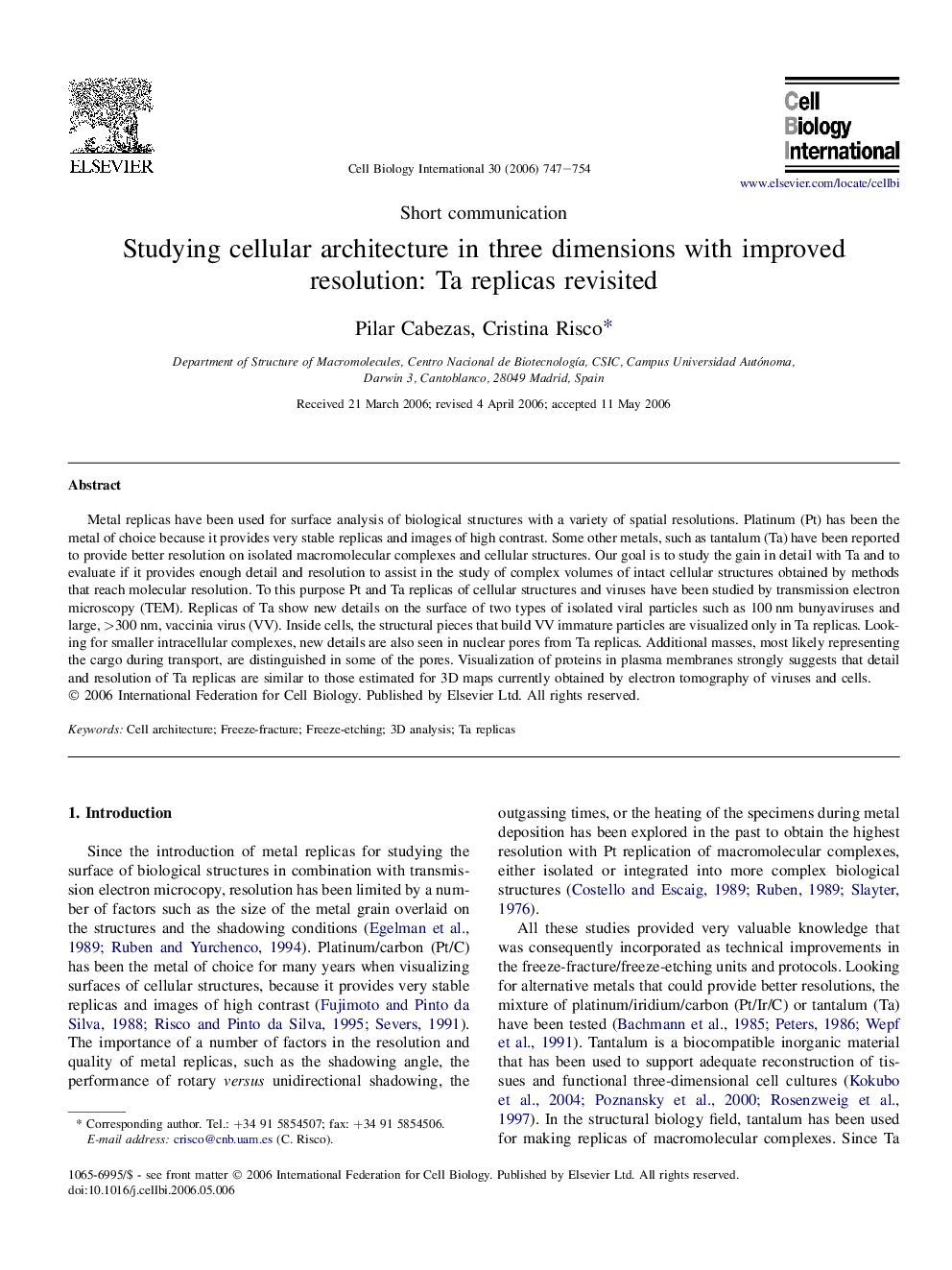| Article ID | Journal | Published Year | Pages | File Type |
|---|---|---|---|---|
| 2067861 | Cell Biology International | 2006 | 8 Pages |
Abstract
Metal replicas have been used for surface analysis of biological structures with a variety of spatial resolutions. Platinum (Pt) has been the metal of choice because it provides very stable replicas and images of high contrast. Some other metals, such as tantalum (Ta) have been reported to provide better resolution on isolated macromolecular complexes and cellular structures. Our goal is to study the gain in detail with Ta and to evaluate if it provides enough detail and resolution to assist in the study of complex volumes of intact cellular structures obtained by methods that reach molecular resolution. To this purpose Pt and Ta replicas of cellular structures and viruses have been studied by transmission electron microscopy (TEM). Replicas of Ta show new details on the surface of two types of isolated viral particles such as 100Â nm bunyaviruses and large, >300Â nm, vaccinia virus (VV). Inside cells, the structural pieces that build VV immature particles are visualized only in Ta replicas. Looking for smaller intracellular complexes, new details are also seen in nuclear pores from Ta replicas. Additional masses, most likely representing the cargo during transport, are distinguished in some of the pores. Visualization of proteins in plasma membranes strongly suggests that detail and resolution of Ta replicas are similar to those estimated for 3D maps currently obtained by electron tomography of viruses and cells.
Related Topics
Life Sciences
Biochemistry, Genetics and Molecular Biology
Biophysics
Authors
Pilar Cabezas, Cristina Risco,
